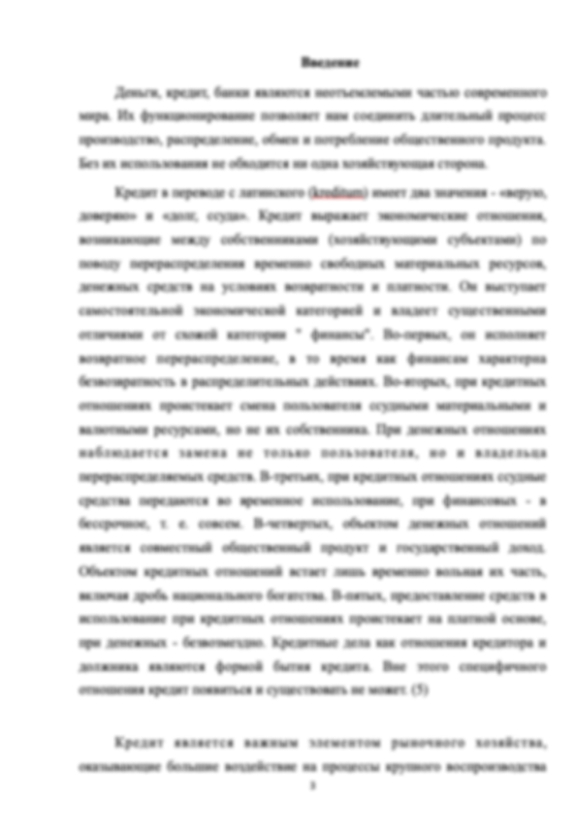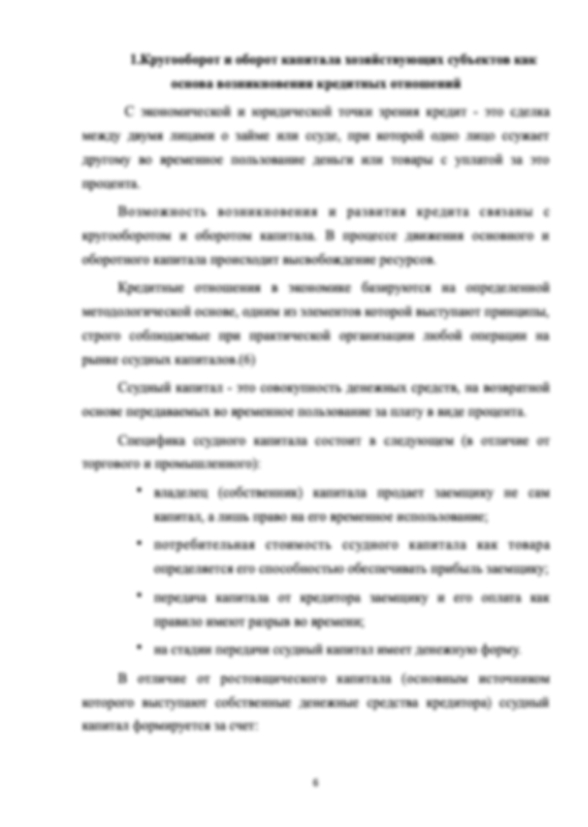Автор изумительно справился с работой. Огромное Вам спасибо, Александр! :) Всем рекомендую этого автора!
Информация о работе
Подробнее о работе

The Fast Fashion Industry: The good, the bad and can anything be done to change it?
- 47 страниц
- 2017 год
- 151 просмотр
- 0 покупок
Гарантия сервиса Автор24
Уникальность не ниже 50%
Фрагменты работ
TABLE OF CONTENTS
INTRODUCTION 3
CHAPTER I THE FAST FASHION INDUSTRY AS A NEW PHENOMENON 6
1.1 The History of the Fast Fashion Industry 8
1.2 The Principals behind the Fast Fashion Industry 10
1.3 Reasons for Fast Fashion Industry’s popularity 21
CHAPTER II THE CONSEQUENCES OF THE FAST FASHION INDUSTRY ON MODERN SOCIETY 23
2.1 Economic Impact 23
2.2 Environmental Consequences 26
2.3 Social Effects 28
CHAPTER III POSSIBLE ALTERNATIVES TO THE FAST FASHION INDUSTRY 32
3.1 The growing movement of Fair Fashion 35
3.2 The Consumer’s role in the Fashion Industry 39
CONCLUSION 42
BIBLIOGRAPHY 44
APPENDIX 47
1.1 The History of the Fast Fashion Industry
The fashion industry is going through a transitional period. Over the last twenty years, the industry’s structure has changed due to changes in technology, consumer purchasing habits, and globalization. The Fast Fashion market segment emerged as a result of these changes. Fast Fashion firms capitalize on the high-speed production now available in developing economies to provide up-to-the-minute designs and meet high consumer demand for low cost products in developed countries.
This way of working stands in stark contrast to traditional fashion firms. The Fast Fashion business model relies on this extreme cost-cutting in order to get ahead of the traditional model and compete with traditional industry leaders. This has had knock-on effects on the industry as a whole, with leading firms in other segments exiting the market or being driven to use cost-cutting methods of their own.
...
1.2 The Principals behind the Fast Fashion Industry
Fast Fashion is a relatively new business model that is rapidly taking over the industry. Fast Fashion firms focus on creating a large amount of inventory as quickly and cheaply as possible and products are then sold at low prices with swift inventory turnover. Styles are based on the latest fads and trends and firms rely on trend anchoring to ensure that consumers overlook the “outright disposable” quality of their products.5 Fast Fashion operates on a much faster product turnover cycle than traditional models which have two to four collections per year. Instead of offering new products every three to four months, Fast Fashion companies offer new products every two to four weeks. As a result, it is imperative that these products reflect the latest trends, no only to ensure demand but also so that the process of moving from design to store shelves is shortened significantly.
...
1.3 Reasons for Fast Fashion Industry’s popularity
Fast Fashion is a much talked about issue in the fashion world. Clothing that is stylish, low cost, reproduces the most recent luxury fashion trends, and that reflects the desires of young people is at the heart of Fast Fashion.
As its name suggests, it is an industry that responds more quickly than other fashion industries. The items sell like hot cakes to young consumers who want to keep up to date with the current trends. Fast Fashion manufacturers entice their consumers with an intentionally low-end pricing policy so that they buy more clothes than they actually need. This marketing ploy appeals to unconscious human instincts: opting for a comparatively cheaper offer feeds the illusion of frugality and therefore increases the opportunity for further consumption. Regular end-of-season and clearance-sale campaigns keep creating new incentives to buy.
...
2.1 Economic Impact
In order to best convey the economic importance of the Fashion Industry, as well as the global effects of changing industry practices, it is useful to first establish a working vocabulary. Clothing is, as defined by The Economist, a “positional good.” Positional goods are commodities that are purchased to keep up with society or to “say something” about the owner (“Positional Goods”).25 Typically, positional goods refer to luxury items, but for the purposes of this study we must go beyond The Economist’s perspective. All clothing is part of the greater Fashion Industry. Clothing, no matter what the brand or price level, reflects a message about the wearer.
Clothing serves three purposes: functionality, artistic expression, and self-expression. Even without conscious understanding, every garment purchased is a part of a larger picture and every person who wears clothing is a part of the Fashion Industry.
...
2.2 Environmental Consequences
It is commonly known that “oil, gas and mining” are the industries that create the highest negative impact in the world. They create waste, emit tons of CO2 and chemicals, and treat their laborers like slaves, while at the same time also destroying nature. But, it is little known that “the Fast Fashion industry” is the second biggest contributor to these problems.
According to Bain:“The model of “fast-fashion” comprises of a) constant up-to-date trends in products and b) selling large volumes of products priced significantly below that of a comparable product from a “higher-end” brand. This business phenomenon, which took off over the past decade, has revamped the apparel retail landscape; overall retail prices have increased over the past 10 years, yet clothing prices have decreased.”29
This self-reinforcing cycle has serious consequences with regards to climate change and the environment at large.
...
2.3 Social Effects
The question remains as to how fashion can be provided at these incomparably low prices while being made ethically, and also what is the effect on the environment of such a large-scale operation. In the modern world, we are more removed from the production and growth of the things we buy and consume, and are, therefore, less inclined to concern ourselves with the consequences of our consumption patterns. The survival and betterment of this world is dependent on people with power asking questions and, in a capitalist economy, the people with money have the power. The changing pace and ethical virtues of new telecommunications and ‘fast’ capitalism have been well studied over the past few decades both from a sociological and theoretical standpoint.38
On April 24th 2013, a garment factory collapsed in Bangladesh, bringing worldwide attention to the destruction caused by the Fast Fashion industry.
...
3.1 The growing movement of Fair Fashion
Clothes produced by workers that are treated fairly are often of a higher quality than they otherwise would be. Unique handmade fashion details can be found in garments crafted by people who are invested in and take pleasure from their work. The consumer can see the benefits and so can the hard-working people that make the clothes.
The Fair Trade movement started with individual companies called Alternative Trade Organizations (ATOs) that made a commitment to work directly with indigenous peoples and to market their products directly to consumers. By cutting out the middleman, ATOs have been able to pay farmers substantially more while still offering a competitive product.
As a direct result, organizations such as the World Fair Trade Organization were formed to communicate the concept of Fair Trade to the masses.
...
3.2 The Consumer’s role in the Fashion Industry
When asked in a survey, the majority of consumers claim to prefer ethically certified products over non-certified alternatives and also claim to be willing to pay a price premium for such products. There is no clear evidence, however, that people actually seek out such ethically certified goods and pay a premium for them when shopping. New evidence regarding consumer behavior has been provided by studies conducted in a major U.S. grocery store chain. The research found that the Fair Trade label has a substantial positive effect on sales. Sales of the two most popular bulk coffees sold in the stores rose by almost 10% when the coffees were labeled as Fair Trade.
Demand for the higher priced coffee was inelastic: sales of the labeled coffee remained steady when its price was raised by 8%.
...
CONCLUSION
The market for apparel has become more varied and faster changing than ever before. The development of new, quick fashion reflects the transition from a production-driven to a market-driven approach in the Fashion Apparel Industry.
Throughout the last two decades, the Fashion Apparel Industry has received increasing attention around their buyer-supplier relationships and quick response supply chain management.
Retailers have started realizing that flexibility and rapid responsiveness market changes are the keys to competitiveness in today’s market. The obsolescence of long buying cycles encountered by many fashion retailers has forced them to improve responsiveness through quick response, just-in-time and agile supply chains. In order to improve efficiency in a demand-driven market, such practices have been applied to vertical integration consisting of collaboration, information sharing and trust between the entities of a particular supply chain.
...
BIBLIOGRAPHY
Literature
1. Arianna Rossi, Amy Luinstra and John Pickles Basingstoke, Towards better work : understanding labour in apparel global value chains, Palgrave Macmillan, 2014, p. 318.
2. Barnes, L .& Lea- Greenwood, G. (2010) Fast Fashion in the retail store environment, International Journal of Retail & Distribution Management, Vol 38. No 10, pp. 760-772.
3. Brooks, Andrew Richard, Clothing poverty : the hidden world of fast fashion and second-hand clothes, London ; Zed books 2015, p. 304
4. Chau, Lisa. "The Wasteful Culture of Forever 21, H&M, and 'Fast Fashion'" US News. US News & World Report, 21 Sept. 2012. Web. 24 Sept. 2014.
5. Miguel Angel Gardetti, Subramanian Senthilkannan Muthu, Ethnic Fashion, Springer e-books, 2016, p. 197.
6. Moretta Tartaglione, A., Scafarto, V. (2011), “Trend evolutivi nei modelli di management delle imprese del fast fashion”, Impresa, Ambiente, Management, vol. 5, n. 3, September-December, pp. 65-93.
...
BIBLIOGRAPHY
Literature
1. Arianna Rossi, Amy Luinstra and John Pickles Basingstoke, Towards better work : understanding labour in apparel global value chains, Palgrave Macmillan, 2014, p. 318.
2. Barnes, L .& Lea- Greenwood, G. (2010) Fast Fashion in the retail store environment, International Journal of Retail & Distribution Management, Vol 38. No 10, pp. 760-772.
3. Brooks, Andrew Richard, Clothing poverty : the hidden world of fast fashion and second-hand clothes, London ; Zed books 2015, p. 304
4. Chau, Lisa. "The Wasteful Culture of Forever 21, H&M, and 'Fast Fashion'" US News. US News & World Report, 21 Sept. 2012. Web. 24 Sept. 2014.
5. Miguel Angel Gardetti, Subramanian Senthilkannan Muthu, Ethnic Fashion, Springer e-books, 2016, p. 197.
6. Moretta Tartaglione, A., Scafarto, V. (2011), “Trend evolutivi nei modelli di management delle imprese del fast fashion”, Impresa, Ambiente, Management, vol. 5, n. 3, September-December, pp. 65-93.
7. Nick Osbaldiston Basingstoke, Culture of the slow : social deceleration in an accelerated world, ; New York : Palgrave Macmillan, 2013, p. 204
8. Raustiala, Kal, and Christopher Sprigman. "The Piracy Paradox." Virginia Law Review 92.8 (2006): 1687-777. University of Virginia Law. University of Virginia, Dec. 2006. Web. 1 Nov. 2014.
9. Ross, M, & Morgan, A. (2015). The true cost. Untold Creative.
Electronic sources
10. “Advancing Sustainable Materials Management: Facts and Figures 2013,” United States Environmental Protection Agency. June 2015.
https://www.epa.gov/sites/production/files/201509/documents/2013_advncng_smm_rpt.pdf
11. A Bold Experiment in Ethical Clothing: Fair Trade Certified Apparel & Linens Pilot Lessons Learned 2010-2012
//https://www.fairtradeusa.org/sites/default/files/Apparel%20Pilot%20Report.pdf//
12. Bain, Marc. “The Neurological Pleasures of Fast Fashion,” The Atlantic. March 25, 2015. http://www.theatlantic.com/entertainment/archive/2015/03/the-neurological-pleasures-of-modern-shopping/388577/
13. Bain, Marc. “These Chinese Mills are Going Green- and Saving Millions’, QZ.com. 21 June,2016 < http://qz.com/383562/these-chinese-textile-mills-are-going-green-and-saving-millions/
14. Bangladesh murder trial over Rana Plaza factory collapse, 1.06.2015 http://www.bbc.com/news/world-asia 32956705
15. Butler, S. (2015). Zara Owner Inditex Faces Fines in Brazil Over Poor Working Conditions Claim. The Guardian. http://www.theguardian.com/fashion/2015/may/12/zara-owner-inditex-fines-brazil-working-conditions-claim
16. Calamari, S., & Hyllegard, K. H. (2016). An exploration of designers’ perspectives on human health and environmental impacts of interior textiles. Textiles and Clothing Sustainability, 2(1), 1-16. doi:http://dx.doi.org/10.1186/s40689-016-0020-7 17. Ethical issues remain in the fashion industry //https://www.raconteur.net/business/ethical-issues-remain-in-the fashionindustry?utm_c
18. “Fast Fashion is the Second Dirtiest Industry in the World, Next to Big Oil,” EcoWatch. August 17, 2015. http://www.ecowatch.com/fast-fashion-is-the-second-dirtiest-industry-in-the-world-next-to-big–1882083445.html
19. Fashion Futures2025: Global Scenarios for a Sustainable Fashion Industry (n.d.). Forum For The Future.Retrieved on November 4, 2010 from: /http://www.forum forthe;future.org/files/FashionFutures_2025_FINAL_SML.pdfS
20. Fair Trade in the Future of Fashion. Posted on March 16, 2017 by WFTO Europe, By Eva Marie Wüst Vestergaard //https://wfto-europe.org/news/fair-trade-in-the-future-of-fashion//
21. FAIR TRADE FASHION //http://www.peopletree.co.uk/about-us/fair-trade-fashion//
22. "Fast Fashion" Isn't Just Trendy and Glamorous: It Has Consequences https://www.newdream.org/resources/fast-fashion-has-consequences
23. Joe Fresh: ethics, sustainability, labor rights data researched by JUST https://projectjust.com/brand_joefresh/
24. Joe Fresh. (2013). About Us. Retrieved from http://www.joefresh.com/en/about/
25. Krupnick, Ellie. “Chemicals in the Fast Fashion Revealed in Greenpeace’s ‘Toxic Threads: The Big Fashion Stitch-Up’ huffingtonpost.com, 29. Nov. 2012 21 June, 2016 < http://www.huffingtonpost.com/2012/11/20/chemicals-in-fast-fashion-greenpeace-toxic-thread_n_2166189.html >
26. Loeb, W. (2015a). Who Are the Fast Fashion Leaders And Why Does It Matter. Forbes. http://www.forbes.com/sites/walterloeb/2015/10/23/who-are-the-fast-fashion-leaders-and-why-does-it-matter/
27. OECD Factbook 2013: Economic, Environmental and Social Statistics: Household disposable income. Retrieved from http://www.oecdilibrary.org/sites/factbook-2013- en/03/01/02/index.html?itemId=/content/chapter/factbook- 2013-23-en
28. Official site of Peopletree company: http://www.peopletree.co.uk
29. Perez, M. (2014). The social (ir)responsibility of Inditex. United Explanations. http://unitedexplanations.org/english/2014/01/20/the-social-irresponsibility-of-inditex-2/
30. 10 Principles Of Fair Trade //http://wfto.com/fair-trade/10-principles-fair-trade//
31. Slow Fashion Award 2010., 2010. Cast Your Art. Retrieved on November 4, 2010 from: /http://www.castyourart.com/en/2010/04/21/slow-fashion-award-2010-wien-aga dez/S
32. Unbottled Gini http://www.economist.com/node/17957381
33. Whitehead, S. (2014). 5 Truths the Fast Fashion Industry Doesn’t Want You to Know. Huffington Post. http://www.huffingtonpost.com/shannon-whitehead/5-truths-the-fast-fashion_b_5690575.html
34. Whitehead, S. (2015b). The True Cost of Fast Fashion: Continuing The Conversation. Huffington Post.http://www.huffingtonpost.com/shannon-whitehead/the-true-cost-of-fast-fas_b_7983114.html
35. Wicker, Alden. “Fast Fashion is Creating an Environmental Crisis,” Newsweek. September 2, 2016.
//http://www.newsweek.com/2016/09/09/old-clothes-fashion-waste-crisis-494824.html//
36. “What we do for the Environment/ Recycling Textiles” planetaid.org, 21 June, 2016. < http://www.planetaid.org/what-we-do/for-the-environment/recycling-textiles>
37. What makes 'fast fashion' brands so successful? https://www.quora.com/What-makes-fast-fashion-brands-so-successful
38. Why Brands and Retailers are Running With the ‘Slow Fashion’ Movement. Available online: http://www.forbes.com/sites/aliciaadamczyk/2014/11/20/why-brands-and-retailers-are-running-with-the-slow-fashion-movement/#1b1266906505 (accessed on 15 January 2016).
Video source
39. The true cost, Andrew Morgan, 2015: http://truecostmovie.com
Форма заказа новой работы
Не подошла эта работа?
Закажи новую работу, сделанную по твоим требованиям


